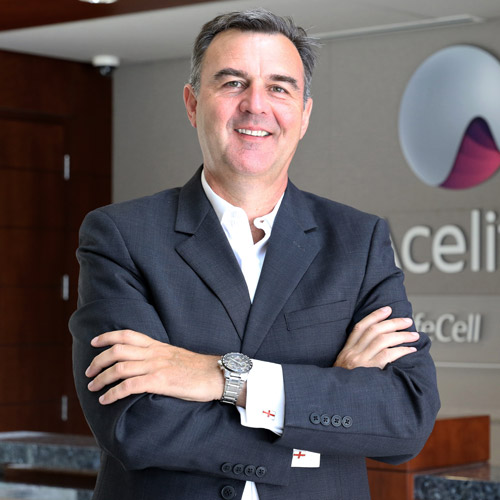Hope Spadora was working as a financial analyst at a semiconductor firm in California when she was invited to join her company’s newly formed real estate division. She hurried to the local library to find a book about corporate real estate and study up on the new opportunity.
“There was only one book,” she says. “That was it! I read that book from top to bottom, and I got a good sense of what it was all about, and then I thought, ‘Yeah, I’d really like to go for that.’”
She soon came aboard the real estate team as a portfolio manager, and on the foundation of that single book, Spadora raised an edifice of experience. Throughout the next 20 years, she obtained her real estate and general contracting licenses, and worked every aspect of the field—from brokerage to development—in California and at hundreds of sites overseas.
One Friday evening in 2012, she received a call from a recruiter at ANSYS, a software company specializing in intricate engineering simulations. The firm’s fundamentals impressed her.
“I thought, ‘This company’s been around for 45 years,’” she recalls. “‘They just became a billion-dollar company, their growth rate is incredible, they’re coming out with a whole new host of simulation products. It could be a very exciting time.’”
So Spadora moved to the East Coast and became director of real estate and facilities for ANSYS. She manages a $17 million budget, supervises 67 branch locations worldwide, maintains best practices and consistent standards of design throughout the globe, and directs facilities management for the entire network.

“Whatever happens around the world, I’m tied into whatever goes on,” she says, and adds that a “great international team”—the assembly of regional directors and associates she meets with every morning—helps her stay connected.
Spadora also oversees construction, which meant that in 2014, when ANSYS leased space for a new headquarters at Southpointe, a vast business park in Canonsburg, Pennsylvania, she was onsite after construction, continuing to guide the process of moving in and building new space as ANSYS continues to grow.
Clayco, the general contractor on the project, used cutting-edge techniques to accelerate construction. Clayco’s builders laid precast concrete walls on the ground, fit them with masonry and window cutouts, then pushed them to a vertical position with “incredibly long braces,” Spadora says, which was an effective method.
“The walls were erected in three and a half days, which is unbelievable,” she says. “Usually you’d go floor by floor by floor. So this is a whole new way. In fact, this was the first time it was used in Pennsylvania. . . . Clayco is at the head of that.”
The rest of the project followed suit, proceeding both rapidly and efficiently. As soon as one floor was finished (and sometimes as soon as one half of one floor was finished, with the cement pourers moving on to the frame of the other half), teams would move in to complete the interiors.
In very little time, ANSYS’s new headquarters stood complete. “A beautiful building,” Spadora says. “Five stories, with lots of amenities throughout.”
However, as ANSYS employees began to move in, a defect revealed itself—the corners of the carpet tiles began to pull up from the floor and curl inward, creating an unsightly “potato chip” effect that also presented safety issues. All of the carpet—five floors’ worth—would require replacement.
By this time, all of the office furniture was already in place, and the cubicles were already up, leaving little room to repair the floor. Spadora and her team logged several months of late nights and early mornings, winching up one cubicle at a time to access the shriveled tiles underneath. Her efforts did not go unnoticed—a number of employees approached her to say how much they preferred the pattern on the replacement tiles.
There’s plenty for ANSYS employees to enjoy at their new headquarters. Walking trails wind around the local group of buildings. An engineer working through daily exercise on the trails will periodically encounter “obstacle courses” where they can get in a quick set of pull-ups, pushups, or planks. The interior is also carefully laid out to meet the needs of the employees.
“One of the things about our engineering and development teams is they’re extraordinarily creative, and they love to collaborate,” Spadora says. “Our marketing teams have an open desk type atmosphere; they like to work a lot with whiteboards.”
“One of the things about our engineering team is they’re extraordinarily creative, and they love to collaborate.”
To accommodate these work styles, three “development floors” in the headquarters feature flexible layouts of pods, chairs, and screens, all bathed in natural light from a generous bank of windows. Groups can meet, collaborate, and split off in whatever configuration seems best. Once the collaborating is done, they can adjourn to nearby ping-pong tables and unwind.
After observing how teams used the development floors, Spadora made one small adjustment—she replaced the blinds in the windows with film on the windows. The impacts of stray balls from aggressive ping-pong volleys had threatened to ruin the blinds and dent the windows.
With morale high at home, Spadora can turn her attention to ANSYS’s overseas territories. The company continues to grow and expand in Asia, which presents new challenges in addition to new domestic opportunities.
One of the three facilities the company owns outright is an office in Pune, India. Energy is expensive in India, and stands to become even more so, as costs have increased 5 percent year over year. That’s why ANSYS is installing solar power at the Pune branch. Although the technical hurdles are daunting, Spadora says the additional effort is worth it.
“The return on investment is growing increasingly attractive,” she says.
In addition to immediate benefits for the Pune location, the globally coordinated installation effort also will provide invaluable experience that will facilitate future solar projects.
“We definitely plan to take the concept of green energy further at ANSYS,” Spadora says. “Both globally and domestically.”


